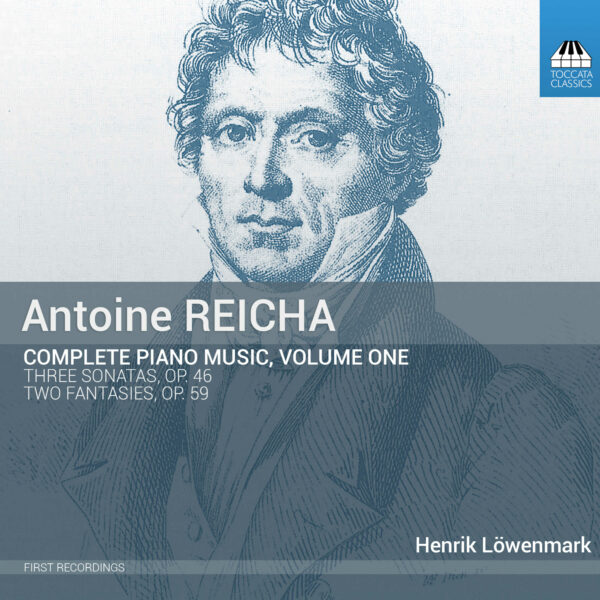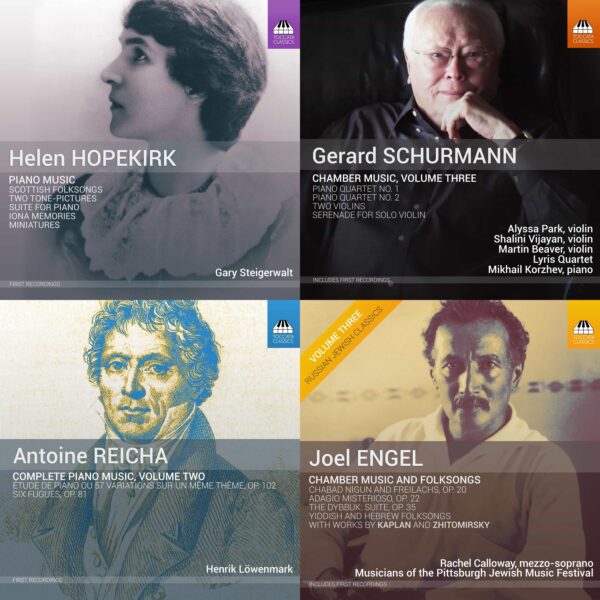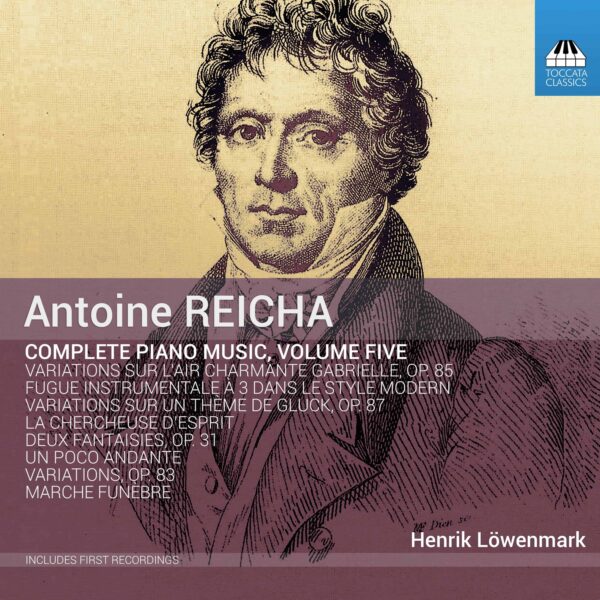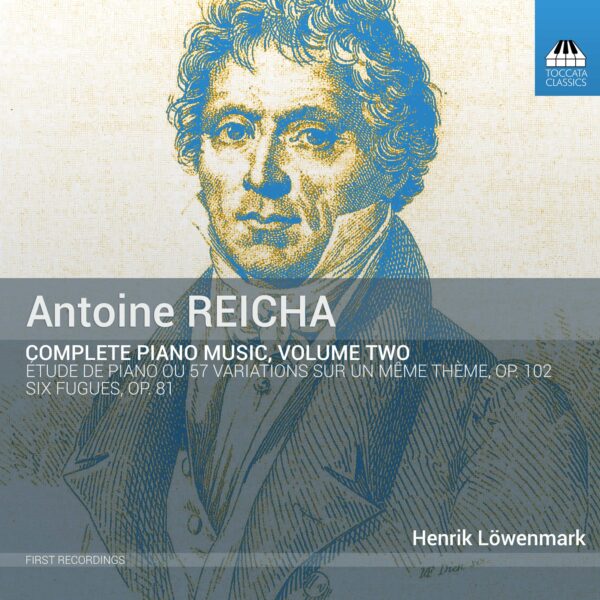Antoine Reicha: Complete Piano Music, Volume One
For two hundred years the piano music of the Czech-born composer Antoine Reicha (1770–1836) – friend of Haydn and Beethoven, teacher of Berlioz, Liszt and Franck – has been buried treasure. Reicha was an important influence on composers of the next generation (indeed, Berlioz was happy to lift a few ideas from him) but apart from an innovative set of fugues his piano works have remained unknown since his own day. Both encompassing Baroque practices and looking forward to the twentieth century, they are full of harmonic and other surprises that show this liveliest of musical minds at work.
Henrik Löwenmark, piano
Listen To This Recording:
-
Sonata in G major, Op. 46, No. 1:
- I Allegro
- II Adagio molto
- III Finale: poco Presto
- I Allegro vivace
- II Andante un poco Adagio
- III Poco Presto
- I Allegro
- II Andante un poco Adagio
- III Finale: Allegro scherzando
- No. 1 in C major, Adagio molto
- No. 2 in F major, Adagio
Sonata in B flat major, Op. 46, No. 2
Sonata in E major, Op. 46, No. 3
Two Fantasies, Op. 59





Fanfare Magazine :
‘This is, joyfully, the first volume of a project to record all of Reicha’s piano music… There is no doubting the fervent nature of Löwenmark’s performances. … Anyone who was not 100 percent convinced of the value of this music could not have presented the slow movement of op. 26/1 (the Sonata in G Major) as such a profound statement as it is here. The first movement of this sonata follows the monothematic sonata form technique of Haydn, and there is even something of Papa in the open, sparse textures of the work’s opening. … There is real gentilité to Löwenmark’s way here, his repeated chords perfectly judged, his articulation wonderful. … The second sonata of op. 26, in E♭ Major, has more complex textures, including a darker chordal passage that is most effective. … One wonders, too, how orchestrally Löwenmark thinks when he plays, as certain gestures seem to lean strongly towards horn calls or woodwind scorings; … Built on a larger canvas than its op. 26 brethren, the E-Major Sonata, this work does exude something of a feel that it can stretch its muscles somewhat. … there is a feeling of hesitancy almost, imparting a most curious (in the positive sense) tinge to the argument. … Once again, Löwenmark seems completely inside the music. Finally, the “Deux Fantasias” of op. 59, are hardly typical examples of that genre, given that they are pretty much non-improvisational in feel. … There is, however, much beauty here, especially given Löwenmark’s loving way with the score. … Unhesitatingly recommended.’
—Colin Clarke, Fanfare Magazine, November/December 2016
Fanfare Magazine :
‘These are tuneful, nicely worked out sonatas that are pleasing to the ear, with the power to set one’s mood at ease. … I thoroughly enjoyed my time with this music. That is due largely to Löwenmark’s expert performances, which never try to make more of the music than is there on the page. His phrasing has delicacy and transparency, allowing the upper and lower voices to project in a balanced manner. Reicha does a few interesting things in this music, such as the four repeated eighth note chords in the left hand that serve as a motto phrase in the first movement of the G-Major Sonata. … Overall, this is impressive piano sound.’
—Mark Novak, Fanfare Magazine, January/February 2017
Music Web International :
‘All [the sonatas] are three-movement works. He has a trick of changing the ordering of his themes in recapitulations that serves to destabilise expectations and intrigue the ear. […]
Henrik Löwenmark has clearly made quite a study of Reicha’s chamber music and his notes offer a well-written and detailed appraisal.
The recording balance has managed to accommodate two different locations and a time frame that stretches from 2007 to 2015.’
—Jonathan Woolf, Music Web International